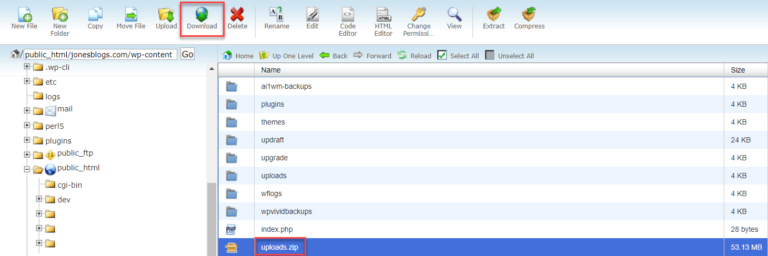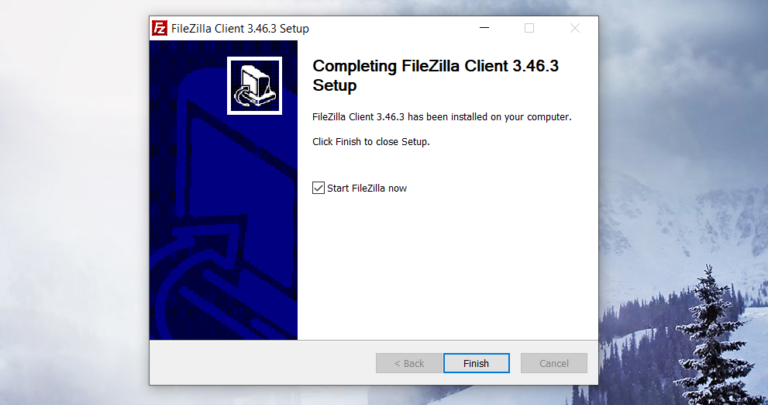Downloading your WordPress media library is a quick and easy process, which can be completed in a number of different ways. In this article, we look at three methods that will enable you to download your media library with minimum fuss. These include:
- Install the Export Media Library plugin.
- Use File Manager in cPanel.
- Download via FTP.
Each method is a great option — simply choose the one that best matches your skillset. Let’s get started.
Use the Export Media Library Plugin
Export Media Library is a free WordPress plugin that enables users to export media library files as a compressed zip archive. So let’s have a look at how to install and set up this useful plugin, and use it to download your WordPress media library.
Step 1: Install Export Media Library
To install Export Media Library on your website, open your WordPress dashboard and select Plugins > Add New.

Here, type ‘Export Media Library’ into the plugin search bar at the top of the page.

Once the plugin has been retrieved, click on Install Now then Activate.
Step 2: Configure the Plugin Settings
Once the plugin has been installed, click on the Media > Export menu. This will take you to the Export Media Library Settings page.

There are a couple of settings you will need to configure:
- Folder Structure – Choose whether you want your WordPress media library downloaded in one folder or a number of nested folders.
- Compression – Select whether to compress your WordPress media library before downloading the zip file. Opting for compression will decrease the size of the zip file, but it does require more processing on the server. We would recommend enabling compression.
Step 3: Download your WordPress Media Library
Once you have configured the plugin’s settings, simply click on Download Zip.

Your WordPress media library will now download to your computer, enabling you to keep the file safe and secure.
Use File Manager in cPanel
If you would rather not use a WordPress plugin, and you have access to cPanel via your hosting provider, then using the File Manager in cPanel to download your WordPress media library may be the right method for you.
cPanel is a powerful platform that provides a range of impressive tools and gives you further control over your WordPress website. One of the key features is the File Manager tool, which will enable you to manage and edit the files of your site. It is from within the File Manager that you can compress and download your media library.
It is worth pointing out that not all hosting providers use cPanel, and the features and layout of cPanel can alter depending on the hosting plan you use. For this article, I will demonstrate downloading the WordPress media library via SiteGround’s cPanel. Let’s have a look.
Step 1: Open cPanel and File Manager
Log into your hosting account and open your cPanel.

Within the cPanel, click on File Manager, which is usually found in the Files section.

Now double click on the public_html folder to access your website’s directory.

Step 2: Compress the Uploads Folder
You now need to find and compress your site’s uploads folder, which is where your media library is stored. To do so, scroll down and find the wp-content folder.

Next, you need to select the uploads folder and then click on Compress icon from the top menu.

A popup will now appear, asking you how you would like to compress your uploads folder. We recommend selecting the Zip Archive option.

SiteGround will now display Compression Results, which simply shows you all the files that have been compressed and the percentage they have been compressed by.

Scroll down to the bottom of the results and press Close.
Step 3: Download the Uploads Folder
Once the uploads folder has been compressed, it is ready for downloading. To do so, select uploads.zip from the list of folders and then click on the Download icon found in the top menu.

Your uploads folder, which contains your WordPress media library, will now download to your desktop.
Download the WordPress Media Library via FTP
The third option we will discuss is using File Transfer Protocol (FTP) to download your WordPress media library. With this method, you will need to download an FTP client, but you will not need to use a WordPress plugin, or go through your hosting account.
FTP gives you direct access to your website’s files from your computer, without the use of a browser. There are numerous FTP programs you can use, but we would recommend FileZilla, a popular and user-friendly FTP client that works on Windows, Linux, and macOS.
So let’s now find out how to set up Filezilla Client and download your WordPress media library via FTP.
Step 1: Install and Set Up FileZilla Client
The first step in this process is to install FileZilla Client on your computer. To do so, open the FileZilla Project website and click on the Download FileZilla Client button.

Follow the install instructions that appear on your screen to complete the FileZilla installation and setup process.

Step 2: Establish an FTP Connection
FileZilla will now ask you to establish an FTP connection with your website’s server.

To do so, you will need to enter your:
- Host (FTP server name)
- Username (FTP username)
- Password (corresponding FTP password)
- Port (FTP port)
If you are not sure on this information, you will need to log into your cPanel and open the FTP Accounts folder.

Here, you can access all the FTP info that you need, as well as set a new FTP password if necessary.

Once you have copied this information into FileZilla Client, click on Quickconnect.

FileZilla will now establish an FTP connection, at which point you can begin the process of downloading your media library.
Step 3: Transfer Your Uploads Folder
Within the FTP client interface, from the Remote site panel, select the wp-content folder.

Then, click on the uploads folder and drag it into your Desktop folder, or another folder located in your Local site panel.

Your website’s uploads folder, containing the media library will now transfer to your computer.
Final Thoughts on How to Download the WordPress Media Library
Downloading your WordPress media library is a straightforward process, whichever method you choose. Whether you want to keep an extra copy of your media library for safety purposes or transfer your images to another site, you can quickly complete this procedure with any of the above three options.
Any questions on how to download a WordPress media library? If so, please feel free to ask away in the comments below.




One comment
Export Media Plugin does not download the entire library as it appears in the wp-content/uploads folder; all the thumbnails are left behind. Trying to find something that literally clones the uploads folder onto my hard drive, surely it cannot be that hard!